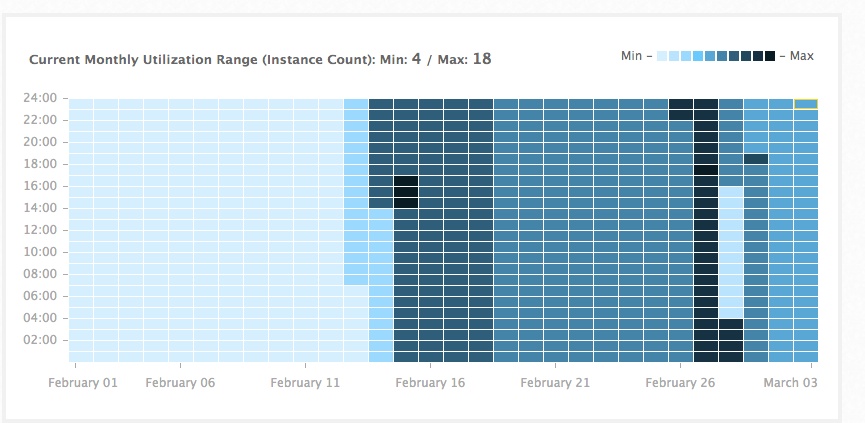The Basics of Cloud Capacity
 The IT capacity plan is derived from the current and future resources utilization for holding, storing and accommodating the software services. It is a given fact that servers’ average utilization in the traditional data center is between 5% and 20%. By contract, when planning capacity in the cloud, the basic working assumption is that, utilization should match the demand at all times and support temporary demand peaks and future trends.
The IT capacity plan is derived from the current and future resources utilization for holding, storing and accommodating the software services. It is a given fact that servers’ average utilization in the traditional data center is between 5% and 20%. By contract, when planning capacity in the cloud, the basic working assumption is that, utilization should match the demand at all times and support temporary demand peaks and future trends.
Capacity planning is described by Wikipedia as the
“process of determining the production capacity needed by an organization to meet changing demands for its products.” It is also given by the following formula:
(number of machines or workers) × (number of shifts) × (utilization) × (efficiency)
In his CIO’s article about cloud computing capacity, Bernard Golden wrote,
(more…)
 Over the last year I had endless conversations with companies that strive to adopt the cloud – specifically the Amazon cloud. Of those I met, I can say that ClickSoftware is one of the leading traditional ISVs that managed to adopt the cloud. The Amazon cloud is with no doubt the most advanced cloud computing facility, leading the market. In my previous job I was involved in the ClickSoftware cloud initiative, from decision making with regards to Amazon cloud all the way to taking the initial steps to educate and support the company’s different parties in providing an On-Demand SaaS offering.
Over the last year I had endless conversations with companies that strive to adopt the cloud – specifically the Amazon cloud. Of those I met, I can say that ClickSoftware is one of the leading traditional ISVs that managed to adopt the cloud. The Amazon cloud is with no doubt the most advanced cloud computing facility, leading the market. In my previous job I was involved in the ClickSoftware cloud initiative, from decision making with regards to Amazon cloud all the way to taking the initial steps to educate and support the company’s different parties in providing an On-Demand SaaS offering.


 Every day I talk, write and comment about the “Cloud”. Every time I mention the cloud I try to make sure that I add the name of the relevant cloud operator, “Rackspace Cloud, “MS Cloud” (Azure) or “HP Cloud”. Somehow all of these cloud titles don’t right to me – it seems the only title that really works for me is the “Amazon Cloud”. In this post, I will elaborate about the competition in the IaaS market and I will explain further why I think this is so.
Every day I talk, write and comment about the “Cloud”. Every time I mention the cloud I try to make sure that I add the name of the relevant cloud operator, “Rackspace Cloud, “MS Cloud” (Azure) or “HP Cloud”. Somehow all of these cloud titles don’t right to me – it seems the only title that really works for me is the “Amazon Cloud”. In this post, I will elaborate about the competition in the IaaS market and I will explain further why I think this is so.